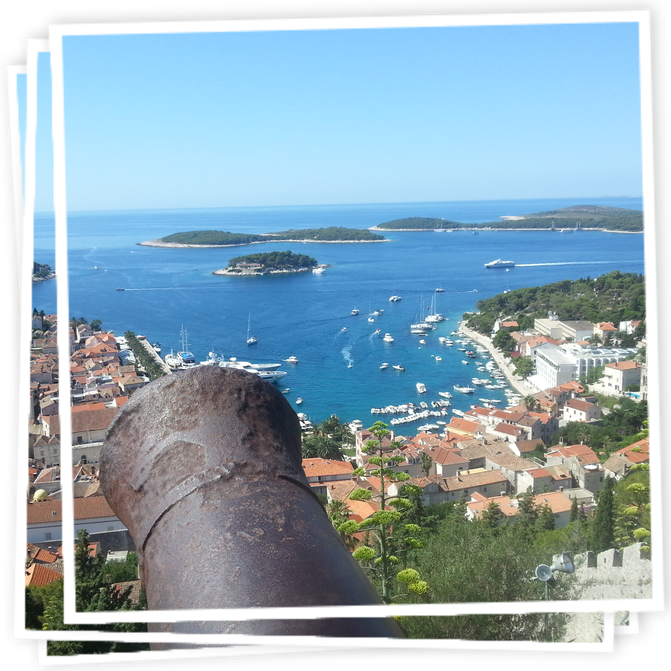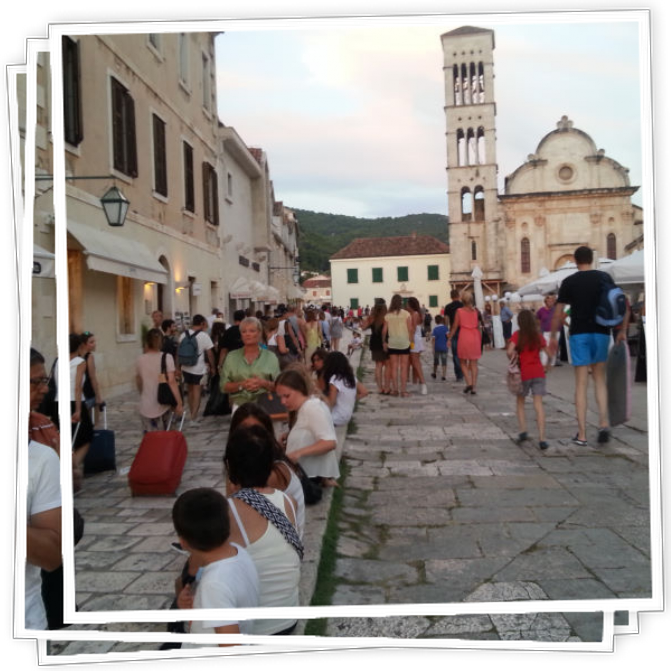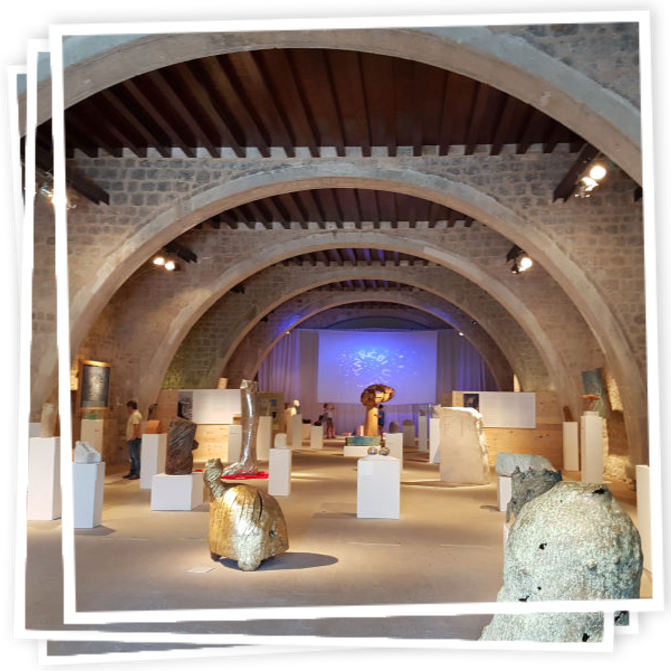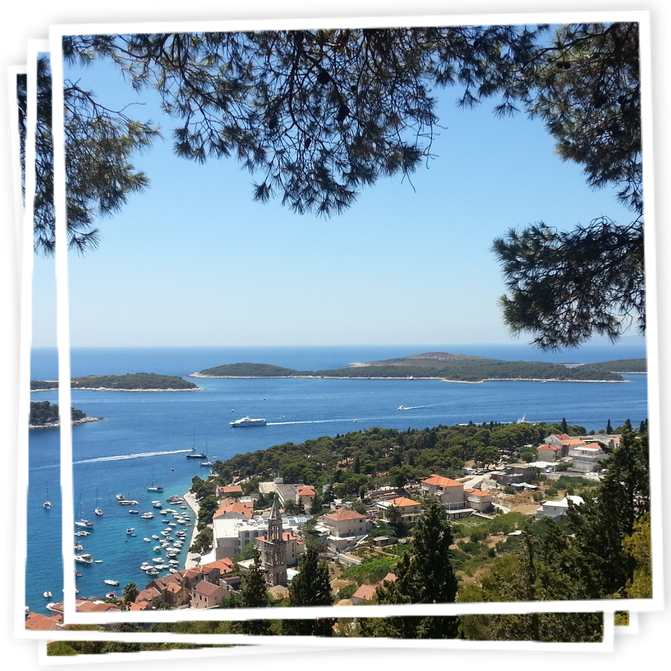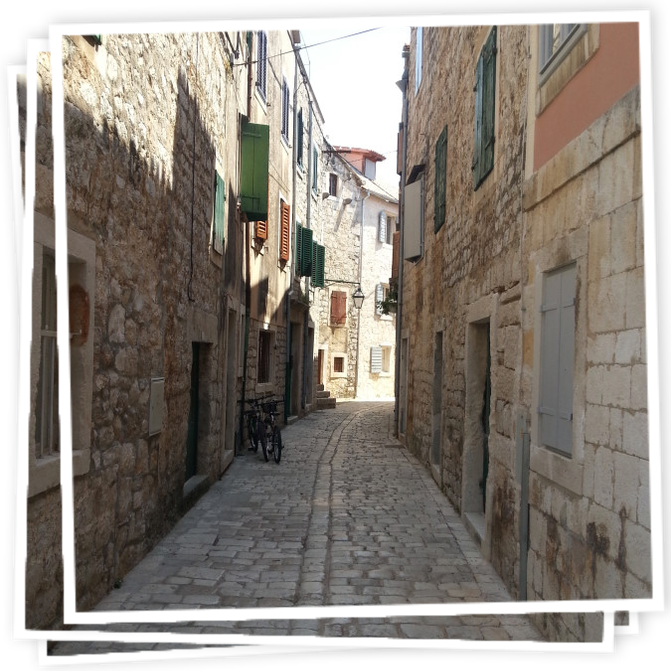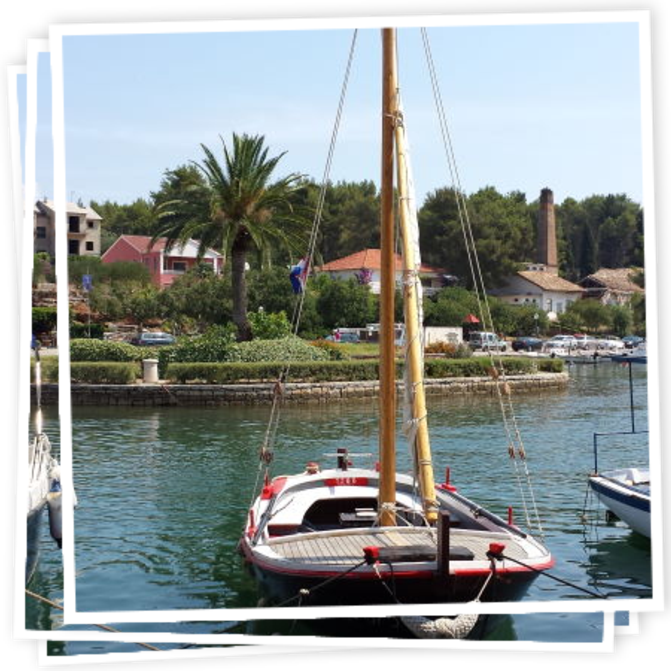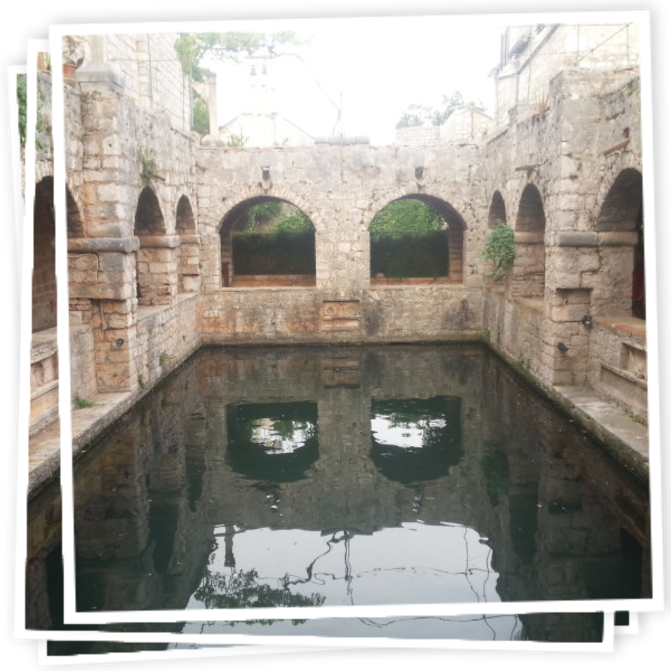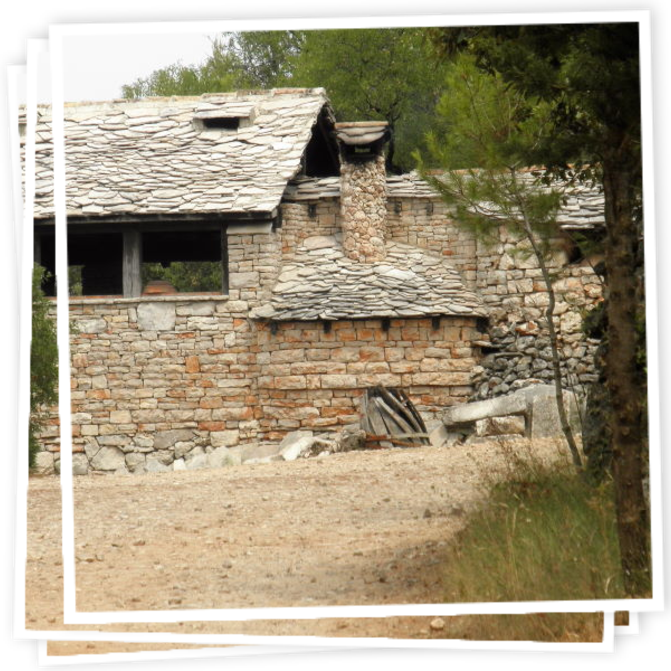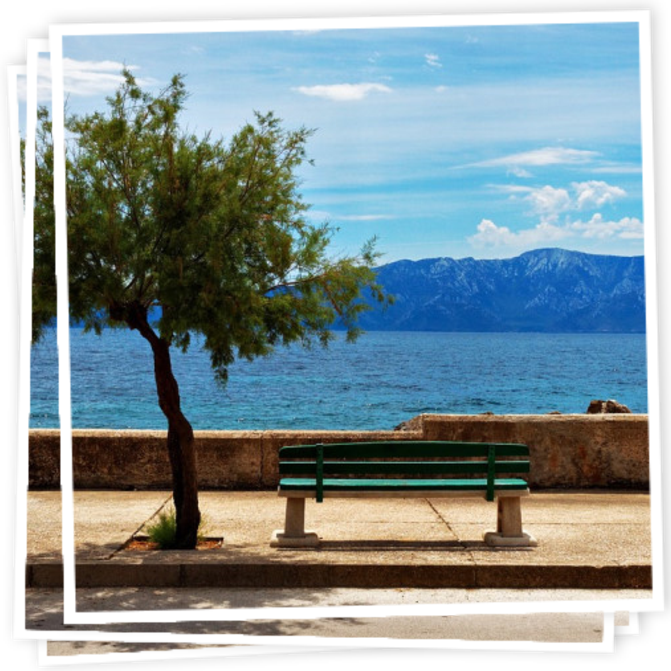
Excursion tips
The City of Hvar
Fortezza Spanjola
Built by the Venetians on the ruins of an Illyrian fortress around 1574. Largely destroyed in a powder explosion, then rebuilt. The view of the city and the Paklenis is impressive, and the amphora museum is worth seeing. A small bar in the center of the fortress provides refreshments.
Sveti Stjepana – Dom of Hvar/Museum
The church at the top of the main square is dedicated to the former pope and martyr. The cathedral dates back to the 16th century and the bell tower is considered one of the most beautiful in Dalmatia. The Bishop's Palace, a former Benedictine monastery, is directly attached. It shows sacred art and an inscription from 1249.
Arsenal
The former galley base, directly at the harbor, was built between 1579 and 1611. One of the first folk theaters in Europe, the outside has been preserved in its original form. The boxes inside date from the 19th century. Today it is an exhibition space for paintings by international artists.
The Benedictine Abbey
Founded in 1664, the nuns have been making lace blankets from dried agave fibers for around 130 years; old works of this art and Hannibal Lukic's icon collection can also be seen.
Sveti Marko Church
Today only the apse and the bell tower remain. It is located towards the back of the harbor to the west. The archaeological collection housed here and the lapidarium of Dr. Grga Novak.
The Franciscan Abbey
Founded in 1461, the monastery is located south along the harbor promenade and houses the tomb of the poet Hannibal Lukic, valuable paintings and unique documents. A 200-year-old cypress tree with a unique growth direction awaits you in the courtyard.
Pakleni octoci – Pakleni Islands
You should definitely not miss the trip to the Pakleni Islands. The taxi boats to the islands start from the small harbor, and day trips to Korcula, Vis and Brac are also offered here. The largest of the Pakleni Islands is Sv. Clement. On the Paklenis you will find countless deserted beaches and special vegetation. Several restaurants and cafes ensure your physical well-being and overnight accommodation is also available.
Further useful information about the city with events, interactive city map, all important addresses and much more. can be found at: Tourismuszentrale Hvar
The Island of Hvar
Stari Grad
Former island capital and hometown of the poet Petar Hektorovic. His “Tvrdalj Castle” is worth seeing. He found his final resting place in the Dominican monastery, just 200 m from his palace, where archaeological inscriptions and a sacred museum can also be viewed. The historic old town with its winding streets and old houses is - like the Ager fields behind the city - a UNESCO World Heritage Site. In the Cathedral of St. Stjepan on the church square, the church of Sv. Nikola south of the Dominican monastery and in Sv. Ivan, on the southern outskirts of the city, you can also admire some very beautiful works. In addition to Sv. Ivan, the former episcopal see, there is also a small excavation with finds from different centuries and remains of the Cyclopean Wall that once surrounded the city. The Faros Museum shows the lives of the residents in different eras. The path to the very pristine Kabal Peninsula begins north of Starigrad and leads to the lighthouse. The headland offers secluded bays and untouched nature. The Ager Field is a 6 km long fertile plain that extends to Vrboska and has been parceled out since ancient times.
Vrboska
Former harbor town of Vrbanj, today a cozy little place that is somewhat reminiscent of Venice due to its construction along canals and lined with small stone bridges. The Church of St. Lovro is special simply because of its design. It dates back to the 16th century and was built as a fortress church to defend against the Turks. It also houses a valuable collection of paintings. There is also a small fishing museum and one of the island's oldest churches, Sv. Petar, right by the sea.
Jelsa
Formerly a shipbuilding center, now a popular tourist spot. There are a few small shops along the harbor promenade that offer very good olive oil, honey and wine from the region. Above Jelsa you can admire what is probably the most famous ancient building on the island - the Greek watchtower Tor. The path leads behind the Maria Heil Church above Jelsa through the maquis and is repeatedly marked with signs. Just takes about 2 hours. The former Roman castle Grad Galesnik is only about 15 minutes away.
Humac und Grapceva Spilja
About 10 kilometres east of Jelsa the road leads up to Humac. The former shepherds' settlement is now used again by winegrowers during the harvest season. The place is a listed building and a tour can be booked at the Konoba. The Konoba itself offers organically grown delicacies. The tour to the Grapceva Spilja Cave is also offered here. Closed on Monday.
Zavala and the south coast
The area is a wine-growing region with a few small, tranquil hamlets and relatively little tourism. Accessible through a single-lane tunnel or from Humac via a gravel road. Very beautiful bays and good views of the island of Scedro.
Sucuraj
The easternmost point of the island is also the arrival and departure port for ferries from Drvenik. From the lighthouse in the small town you have a spectacular view of the Biokovo Mountains.
SHOPPING ON HVAR
The town of Hvar offers a variety of boutiques. It is best to buy lavender products, olive oil and regional wines and spirits directly from the producers, who are spread across the entire island. There is also a large vegetable and fish market at the entrance to the city.
